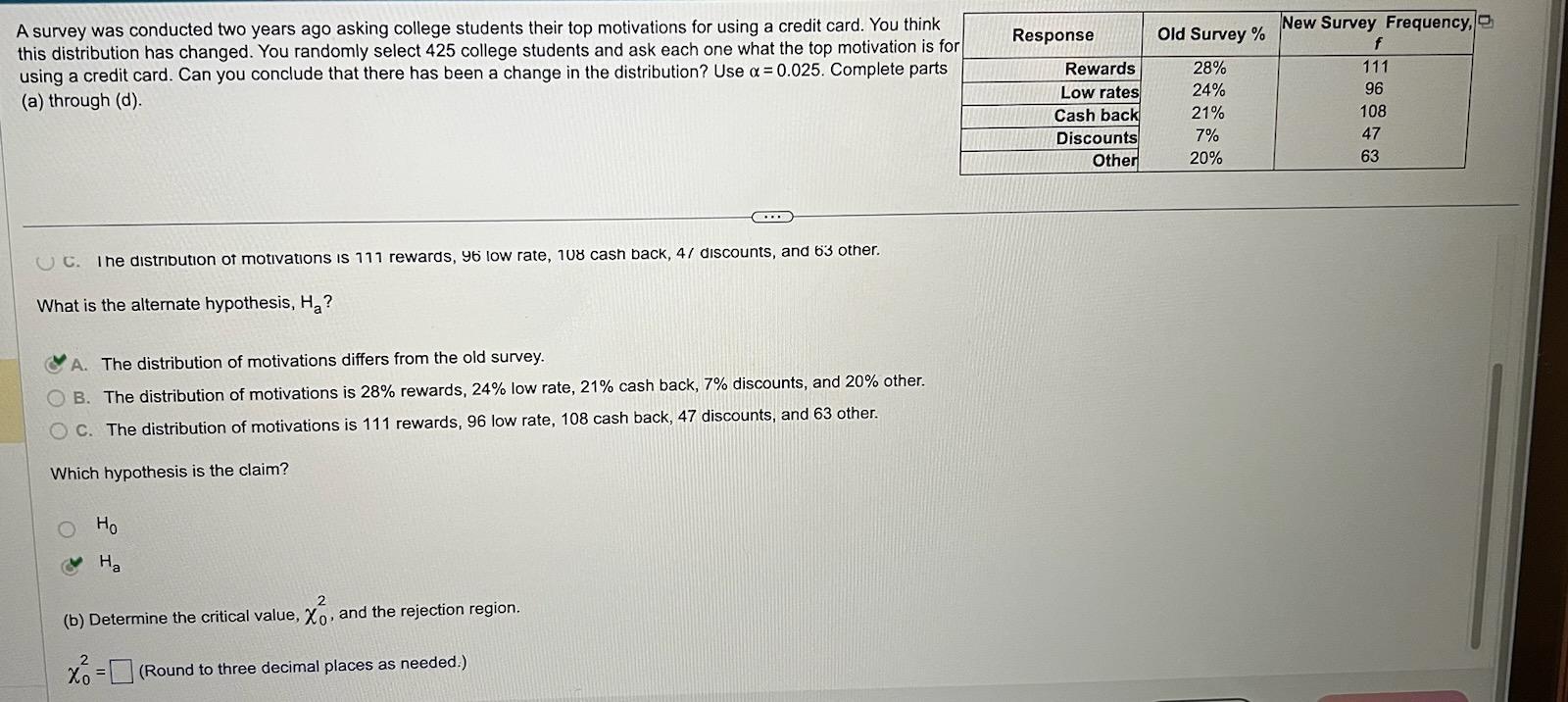Home /
Expert Answers /
Statistics and Probability /
a-survey-was-conducted-two-years-ago-asking-college-students-their-top-motivations-for-using-a-cre-pa483
(Solved): A survey was conducted two years ago asking college students their top motivations for using a cre ...
A survey was conducted two years ago asking college students their top motivations for using a credit card. You think this distribution has changed. You randomly select 425 college students and ask each one what the top motivation is fol using a credit card. Can you conclude that there has been a change in the distribution? Use \( \alpha=0.025 \). Complete parts (a) through (d). C. I he distribution of motivations is 117 rewards, 46 low rate, 1 u8 cash back, \( 4 / \) discounts, and 63 other. What is the alternate hypothesis, \( \mathrm{H}_{\mathrm{a}} \) ? A. The distribution of motivations differs from the old survey. B. The distribution of motivations is \( 28 \% \) rewards, \( 24 \% \) low rate, \( 21 \% \) cash back, \( 7 \% \) discounts, and \( 20 \% \) other. C. The distribution of motivations is 111 rewards, 96 low rate, 108 cash back, 47 discounts, and 63 other. Which hypothesis is the claim? \( \mathrm{H}_{0} \) \( \mathrm{H}_{\mathrm{a}} \) (b) Determine the critical value, \( \chi_{0}^{2} \), and the rejection region. \( \chi_{0}^{2}=\quad \) (Round to three decimal places as needed.)
Expert Answer
By using STATCRUNCH > Go to S
